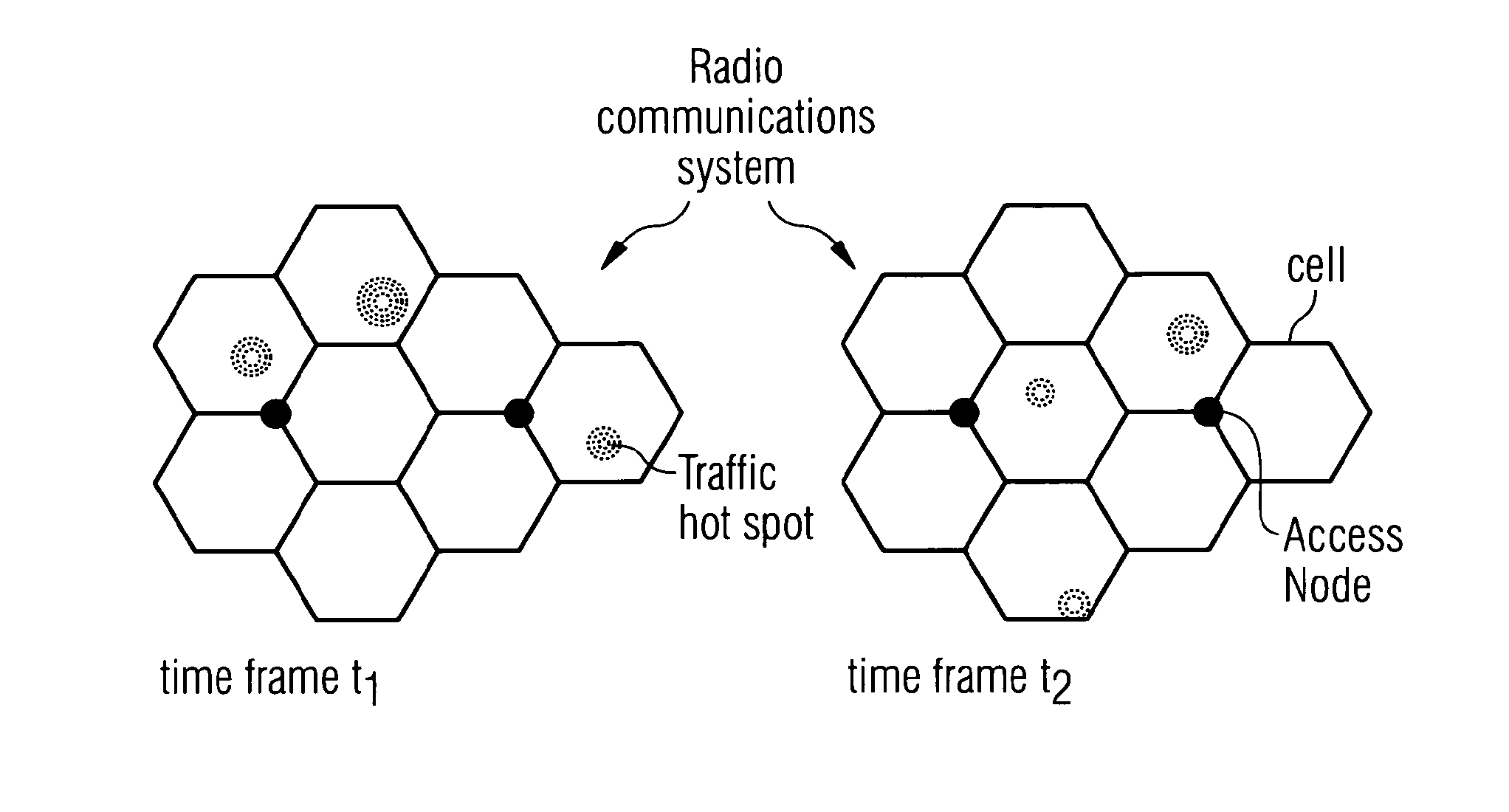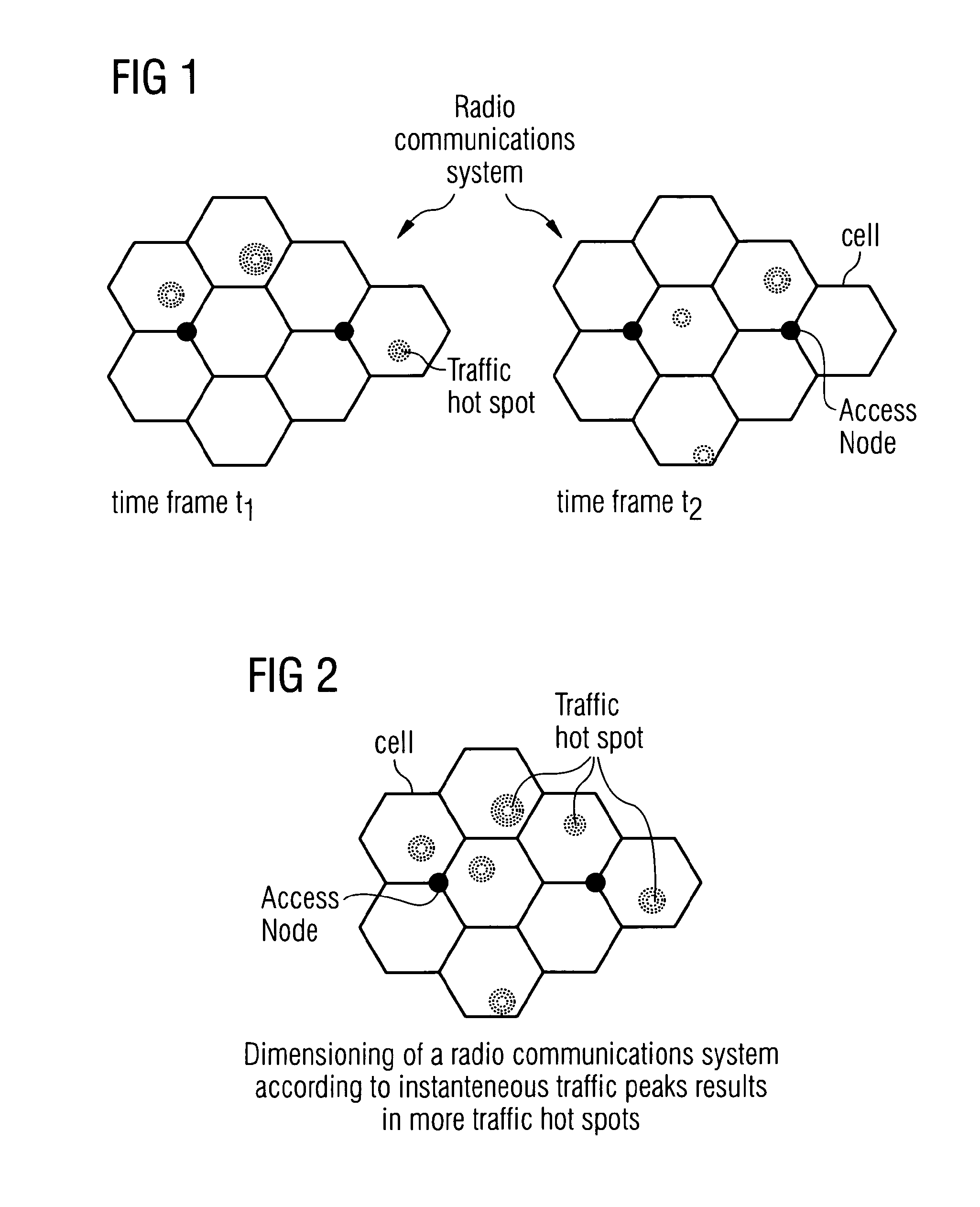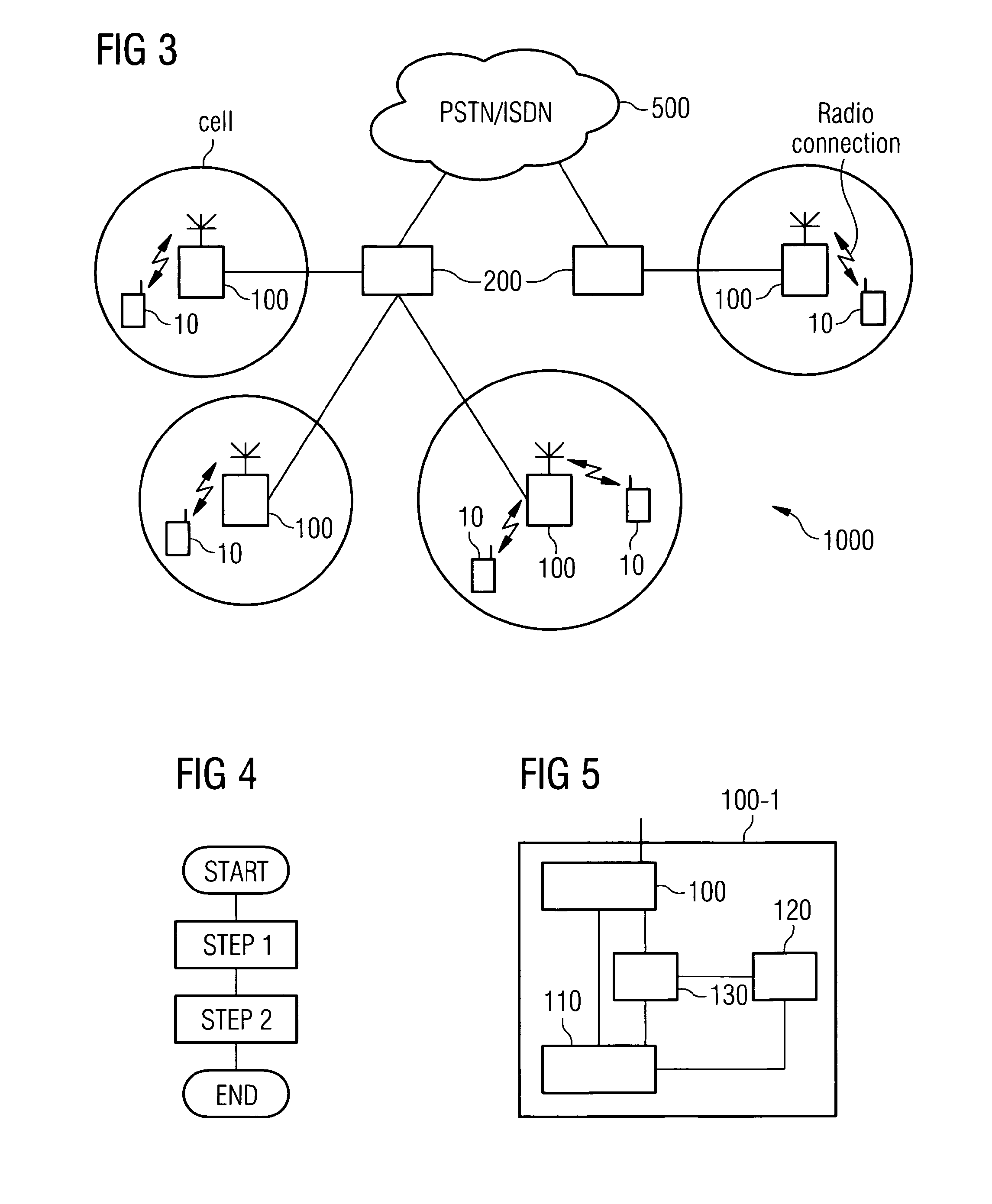Method for Load Balancing in a Radio Communications System and Apparatus Thereof
a radio communication system and load balancing technology, applied in the direction of electrical equipment, network traffic/resource management, wireless communication, etc., can solve the problems of low signal strength and bad sinr of new radio links, and the option of control channels is quite limited, so as to reduce reduce the potential of load balancing, and increase the efficiency of the radio communications system
- Summary
- Abstract
- Description
- Claims
- Application Information
AI Technical Summary
Benefits of technology
Problems solved by technology
Method used
Image
Examples
Embodiment Construction
[0029]FIG. 3 depicts a radio communications system 1000 wherein the invention can be implemented. Such a radio communications system 1000 can use various types of radio technologies known within the 3rd and 4th generation (3G, 4G) groups of radio technologies such as, for example, UMTS (Universal Mobile Telecommunications System), LTE (Long Term Evolution), or LTE-A (Long Term Evolution-Advanced).
[0030]Radio communications system 1000 comprises of a plurality of access nodes 100 which are connected either individually or in groups to network controlling devices 200 which allow connection to a PSTN / ISDN (Public Switched Telephone Network / Integrated Services Digital Network) system 500. These network controlling devices 200 can be at least one of the following: a RNC (Radio Network Controller), BSC (Base Station Controller) or any other network device used for controlling access nodes. The access nodes (ANs) 100 can be one of the following: a BS (base station), an eNB (eNodeB). In 4G ...
PUM
 Login to View More
Login to View More Abstract
Description
Claims
Application Information
 Login to View More
Login to View More - R&D
- Intellectual Property
- Life Sciences
- Materials
- Tech Scout
- Unparalleled Data Quality
- Higher Quality Content
- 60% Fewer Hallucinations
Browse by: Latest US Patents, China's latest patents, Technical Efficacy Thesaurus, Application Domain, Technology Topic, Popular Technical Reports.
© 2025 PatSnap. All rights reserved.Legal|Privacy policy|Modern Slavery Act Transparency Statement|Sitemap|About US| Contact US: help@patsnap.com



